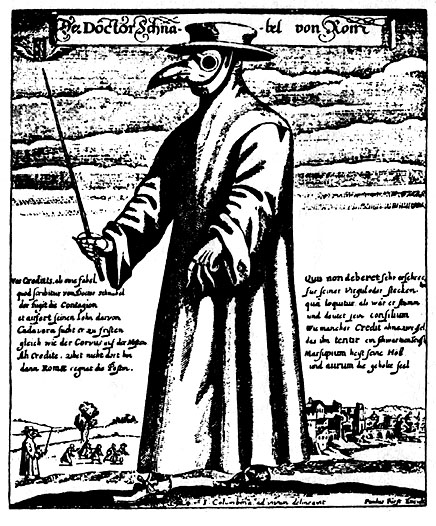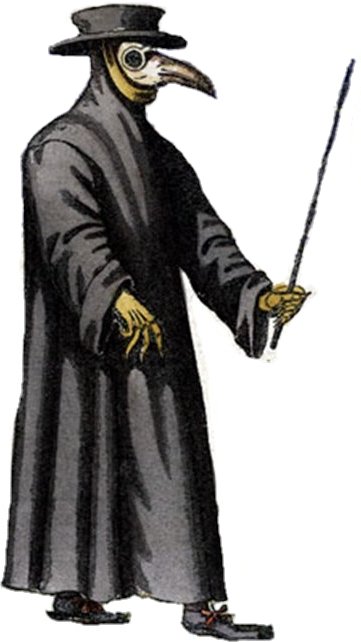
‘Doktor Schnabel von Rom’ (beak doctor of Rome), via Wikipedia
Like the church, cities had to deal with the growing numbers of people ill with the plague. But, like the priesthood, doctors were hardly clamouring to get the chance to spend time with the most dangerous disease they had seen. A new group of doctors were hired – the plague doctor. Often they were second-rate doctors who were not able to run a successful practice (a case of “those who can, do; those who can’t, become plague doctors”, I guess). Not that this really mattered as 14th century medicine had no answer to the plague.
The most remarkable feature of the plague doctors was their beak costume. Their wide-brimmed hat was a symbol of their profession; the long overcoat, leggings, and gloves were made from waxed leather; they carried a cane to use for examining the patient rather than touching them. Their beak mask contained fragrant flowers, herbs or oils, all intended to ward off the noxious vapours that they believed to be responsible for spreading the disease. The sight of them at the door of your house must have been terrifying, a sure sign that the end is near.

Colour version of the beak doctor engraving, via Wikipedia
The plague doctors may have had little effect on the plague, but they were paid very well for their services. Giovanni de Ventura in Pavia received a salary of 30 florins a month, which was several times the wage that a skilled person would receive. The doctors were subject to lengthy contracts that obliged them to visit the sick several times a day, to remain in quarantine, and to not enter the town without being accompanied by a representative of the town.
I love the idea of the healers in a city being dressed in costumes like these. Perhaps with some bird-like mannerisms, tilting their head from side to side as they look at you, saying “hmmm, hmmm” like a crow’s ‘caw’ or dove’s ‘coo’, poking and proding with their canes.
No comments:
Post a Comment